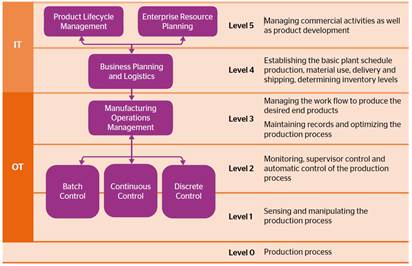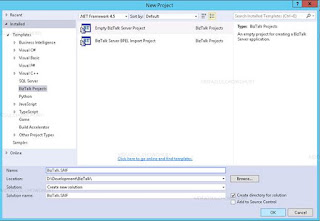SharePoint 2010 Installation Matters
WSS 3.0 Vs MOSS2007:
WSS 3.0 offers all the standard site templates to build team sites, document workspaces, blank sites, blogs, wikis, and meeting workspaces.
You can also use WSS 3.0 to create people and group lists. You can integrate WSS 3.0 sites with Access 2007, Excel 2007, Outlook 2007, Word 2007 and PowerPoint 2007. You can create RSS feeds and set up alerts to notify you when content changes on a site. Version control, task notification and alerts all come with WSS 3.0
MOSS 2007 offers all of the features included in WSS 3.0.
In addition, MOSS 2007 offers business intelligence features that allow you to track key performance indicators and build BI dashboards into your team site. The dashboards can assemble and display business info using Excel spreadsheets, SQL, or integrate with line of business applications. Excel Services in MOSS go beyond simply displaying Excel spreadsheets, you can actually stream parts of a spreadsheet, showing or hiding various parts. Workflow can also be integrated into MOSS 2007 and WSS 3.0. And don’t get me started on slide libraries – a much needed and unique way to share and reuse slides that is available in MOSS 2007.
MOSS 2007 also offers My Sites, which are individual mini-sites that can be set up to show who in your company you’re connected to, what your tasks and skills are, your contact information, and more.
New Features of SharePoint 2010:
SharePoint 2010, Previously known by the code name SharePoint 14, SharePoint 2010 marks a significant upgrade to the SharePoint product.
10. New SharePoint editions—In an effort to better unify the SharePoint lineup, Microsoft will make some big changes to the SharePoint editions with the 2010 release. Windows SharePoint Server (WSS) is gone, and so is Microsoft Office SharePoint Server (MOSS). The free WSS has been replaced by the new SharePoint Foundation 2010. MOSS is replaced by SharePoint Server 2010, which will be available in either the Standard or Enterprise edition as well as in editions for strictly internal sites and for Internet or extranet sites.
9. New hardware requirements—Like the majority of new Microsoft servers, SharePoint 2010 will ship only as a 64-bit product. If you're deploying SharePoint on new hardware, this situation shouldn't be a problem, but it's definitely a consideration if you're planning to upgrade an existing SharePoint server.
8. New software requirements—In addition to new hardware requirements, SharePoint 2010 will require an x64 edition of either Windows Server 2008 or Server 2008 R2. It also requires a 64-bit version of Microsoft SQL Server 2008 or SQL Server 2005.
7. SharePoint Best Practices Analyzer—With the SharePoint 2010 release, SharePoint Best Practices Analyzer will be incorporated as part of the base SharePoint product. This tool provides Microsoft's guidance for SharePoint implementation and troubleshooting. A Problems and Solutions page in the analyzer helps you solve common implementation problems.
6. FAST Search—The new SharePoint release will incorporate the FAST Search technology that Microsoft acquired from the Norway-based Fast Search & Transfer company. The FAST technology provides a superset of the original SharePoint search capabilities. As its name implies, FAST Search is designed for high-end scalability. It supports a number of enhanced capabilities, including a content-processing pipeline, metadata extraction, visual search, and advanced linguistics.
5. Usage reporting and logging—SharePoint 2010 includes a new database designed to support usage reporting and logging. The usage database is extensible, allowing third-party vendors to create custom reports based on the information it contains.
4. Visio Services—Visio Services in SharePoint 2010 lets users share and collaborate on Visio diagrams. A built-in viewer lets SharePoint users view Visio files in their browser without having Visio installed on their system. Visio Services also retrieves and renders any external data used in the Visio diagrams.
3. Enhanced collaboration features—SharePoint 2010 supports tagging content as well as providing enhanced blog authoring capabilities. There's a new group authentication feature that's based on distribution list or organization and a new rich text editor for creating wikis. In addition, calendars from Microsoft Exchange Server can be merged with SharePoint calendars.
2. New browser support—SharePoint 2010 supports an extended set of browsers. It's designed to support XHTML 1.0–compliant browsers and will support Internet Explorer (IE) 8.0 and IE 7.0, Firefox, and Safari. Notably, IE 6.0 isn't supported. So far, there's been no official mention of Google Chrome or Opera.
1. Enhanced SharePoint Designer—Microsoft SharePoint Designer 2010 sports a new UI, improved workflow, and improved integration between designers. Although there were doubts about the Office 2007 ribbon-style interface when it was first released, Microsoft has been steadily putting the ribbon UI in many of its products, including SharePoint 2010. The new designer also has a tabbed interface and provides breadcrumb navigation.
Ref: http://windowsitpro.com/article/articleid/103273/new-features-in-sharepoint-server-2010.
SharePoint 2010 Installation Steps:

Install Prerequisites Software:
- Windows server 2008 with SP 2 / Windows 7 / Vista (All OS must be 64bit) Windows 2008 R2 and Windows Server 2008 KB971831
- WCF Fix article for Windows 2008 R2 and Windows 7 KB976462
- Microsoft SQL Server 2008 Native Client
- Microsoft "Geneva" Framework Runtime
- Microsoft Sync Framework Runtime v1.0 (x64)
- Microsoft Chart Controls for Microsoft .NET Framework 3.5
- Microsoft SQL Server 2008 Analysis Services ADOMD.NET
- PowerShell V2 RTM
- SQL Server 2008 SP1
- .NET Framework 3.5 Service Pack 1 (Full Package) KB959209 KB967190
You may install the prerequisite software from the Installation Wizard। But, may get following error messages:
Could not Install PowerShell™ V2 (CTP3): To fix this error, close the wizard and go to Control Panel-> Programs and Features->Features->Remove Feature and remove the old version of PowerShell™
May get an error while installing Geneva Runtime Framework Installation: To fix this error, close the wizard and download the 64 bit version of Geneva Framework from the above link
You may get a SQL Client Error in the SharePoint Configuration Stage: To fix this error, Install MS SQL Server 2008 Cumulative Update Ton start Installing SharePoint 2010, please select Install SharePoint Server Link from the Installation Page and enter the product key followed by Type of Installation [Standalone/Farm]








Comments
Post a Comment